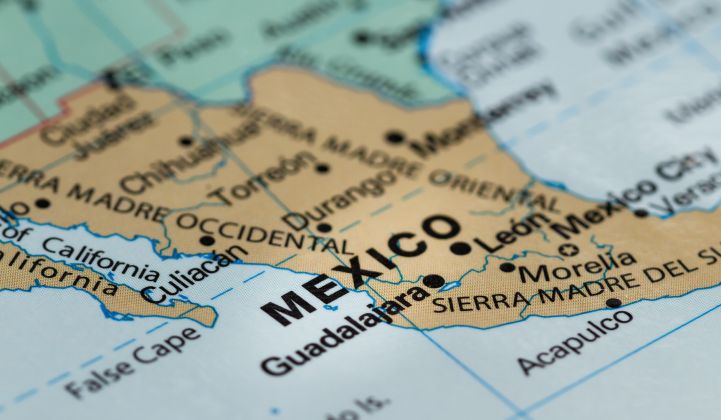Mexico doesn’t have any grid storage -- but that won’t be the case for long.
A delegation from the nation’s energy leadership journeyed to San Diego this week for the Energy Storage North America conference to deliver a message.
After decades with a state-owned monopoly utility, Mexico deregulated its electrical grid with the passage of a 2013 law. The result is a greatly expanded opportunity for competitive investment in the Mexican electricity system. So far, that has unfolded on the generation side, but the laws opened the way for storage as well. Moreover, the Ministry of Energy has endorsed energy storage as a pillar of its transition to cleaner energy.
"The framework is already put in place, but we still do not have the storage investment," said Guillermo García Alcocer, president commissioner of the Mexican Energy Regulatory Commission. "It's very open for business."
The government sees the potential for as much as 2,333 megawatts of storage in the next decade, he noted.
The most desired use cases for storage sound familiar to anyone tracking the U.S. market: demand reduction, transmission upgrade deferral, peak capacity and renewable integration.
But the underlying context for those needs differs in its details. Much of this stems from geography.
Mexico occupies a vast swath of territory, nearly 2 million square kilometers in total. Within that area are several load centers that are grid-connected but remote.
“We have pockets in the system where it seems that storage will bring a lot of value as a transmission asset,” said Commissioner Marcelino Madrigal.
The first planned storage unit, for instance, would put 20 megawatts into the southern tip of the Baja Peninsula.
Residents there have been clamoring for more solar power, but the load pattern has begun to strain the transmission lines. Any expansion of transmission capacity would require some 2,000 kilometers of cable across mountainous terrain, making it considerably more expensive.
A large battery system there could enhance localized solar self-consumption and reduce the congestion risk on the existing transmission lines. This project is going through the transmission planning process.
The Yucatan Peninsula similarly has high-priced, highly congested grid pockets due to limited points of connection to the broader national grid.
Meanwhile, clean energy supplies 20 percent of Mexico’s electrical generation. The legislature has mandated an increase to 35 percent by 2024, promising an influx of more variable generation.
There are still nuances to be worked out regarding how storage can compete in the regulated markets (small behind-the-meter systems, though, are not regulated by the commission). The commissioners participated in a roundtable discussion at Energy Storage North America on how to value storage’s contribution to transmission and distribution, as well as how to define a capacity product. Running through the conversation was their desire to structure storage regulation in a way that does not impose unnecessary costs.
The nature of a Mexican storage industry remains unwritten as well. The lack of storage companies in the country indicates that foreign investment would be vital to early storage projects.
In many ways, Mexico would be an easy fit for U.S. storage companies looking to do business overseas. Just south of the border, it requires less travel time and minimal jet-lag disorientation to conduct business there. The country is welcoming investment in the grid after years of central planning.
If the industry does take off, though, Mexico could be an attractive location for manufacturing bases, García Alcocer noted.
"If people want to locate their facilities for building the storage itself, not just importing, that would be interesting for us to have," he said. "We have a very developed manufacturing history in Mexico."
It hosts advanced aeronautic manufacturing capable of producing entire planes, he added, as well as several major automobile factories. Development of local battery production could create opportunities for future electric-car production.
The commissioners reiterated that they would take a technology-neutral approach to getting a storage industry up and running, focused more on the services provided than the specific tool providing them. They favor price competition through auction mechanisms to determine which contracts go forward.
That attitude is different in style than, say, California's storage procurement mandate. Mexico has the benefit of learning from the storage industry that has formed north of Tijuana, and needn't shoulder the burden of nurturing an infant clean energy industry.
The timeline for storage development remains unclear, but not the trajectory.
"I think the consumer will push us to move fast," Madrigal said.



